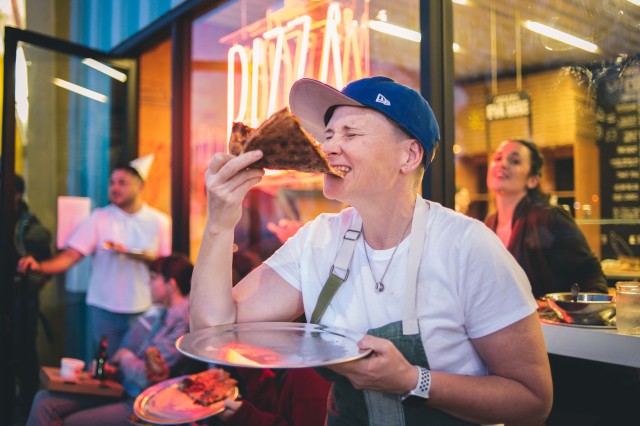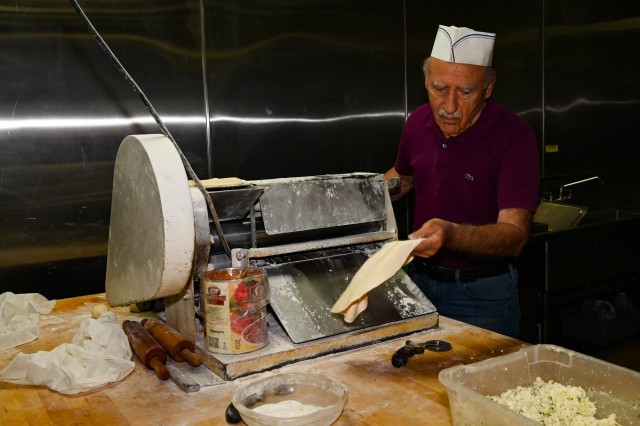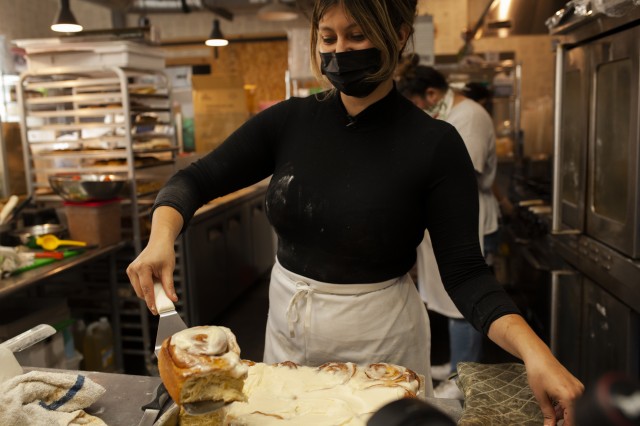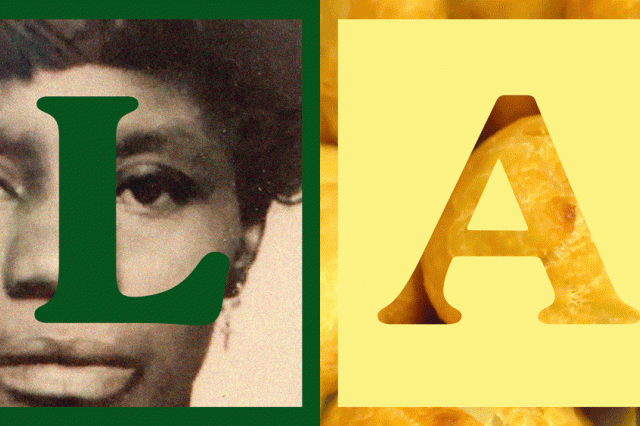

Kneaded: L.A. Bread Stories celebrates Los Angeles’ history, heritage, and communities through the lens of bread.
Asim Bharwani, co-founder of Paratta, was born and raised in L.A. As a South Asian-American, Bharwani clearly saw that Angelenos were missing what Bharwani calls “Desi street food” (native, cultural foods from people of Indian, Pakistani, or Bangladeshi birth or descent). Bharwani, his wife Zara, brother-in-law Khizar, and his sister-in-law Saroosh developed their food truck to share their culture, cuisine, and creativity with the L.A. community. Read along to learn more about their story and the path to developing their version of lachha paratha–a decadent, buttery, pull apart South Asian flatbread with swirled layers.

In a melting pot like L.A., where cultures and cuisines are represented across the board, there was nothing really representing our culture–so began our passion project.
Asim Bharwani
TELL ME A LITTLE BIT ABOUT YOURSELF AND HOW PARATTA GOT ITS START.
I am one of the four owners of Paratta, the other owners of Paratta are my wife, Zara, and my brother and sister-in-law, Saroosh and Khizar Ahsan. The idea [for the business] actually came up at a family barbeque when we were discussing how we could not find any good quality South Asian street food in Los Angeles. Khizar is famous for the kebabs that he makes at his barbeques and we just kept saying, this is the food we need in L.A.! We had traveled around the world–to Toronto, London, and up and down the East Coast–where there are so many South Asian restaurants, but in L.A. where cultures and cuisines are represented across the board, there was nothing really representing our culture. And so began our passion project.
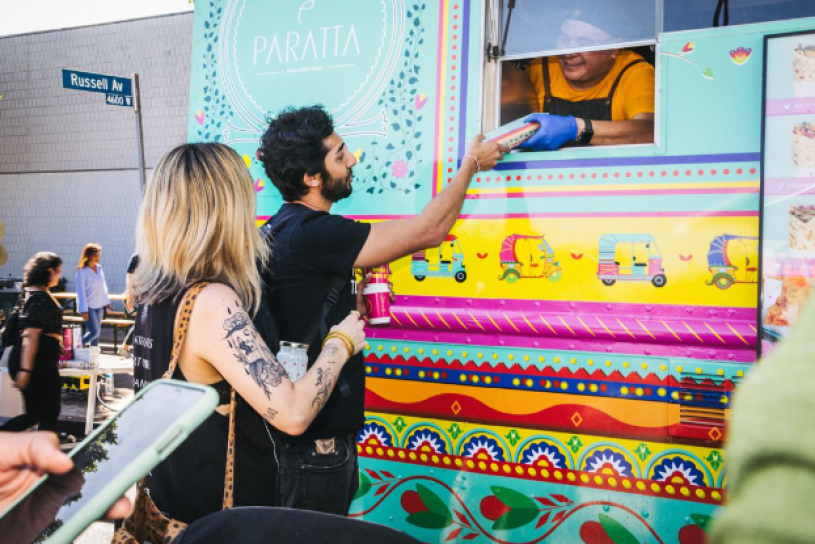
WHAT WERE THE EARLY DAYS OF FRYING LACHHA PARATHA LIKE?
I started making pizza dough in middle school. In those times, and throughout high school, I played with making different styles of pizza dough at home, ranging from Neapolitan, to deep-dish, to New York style dough. I always loved experimenting with dough, so when it came time to decide on the lachha paratha recipe we just decided I might as well be the one responsible for coming up with the recipe.
There was a bit of a learning curve for me. Growing up in L.A. did not expose me to South Asian cuisine like my wife Zara who grew up in Chicago where there are more opportunities. I relied heavily on Zara and her mom’s lachha paratha recipe, which has been passed down for generations, and also pulled from other recipes and my dough making experiences to make the lachha paratha. I came up with something that is not as oily as the traditional recipes–those versions are the ones that most people think of their mom making in the mornings. I’m coming from a second-generation perspective and was trying to bring a different feel to the lachha paratha.
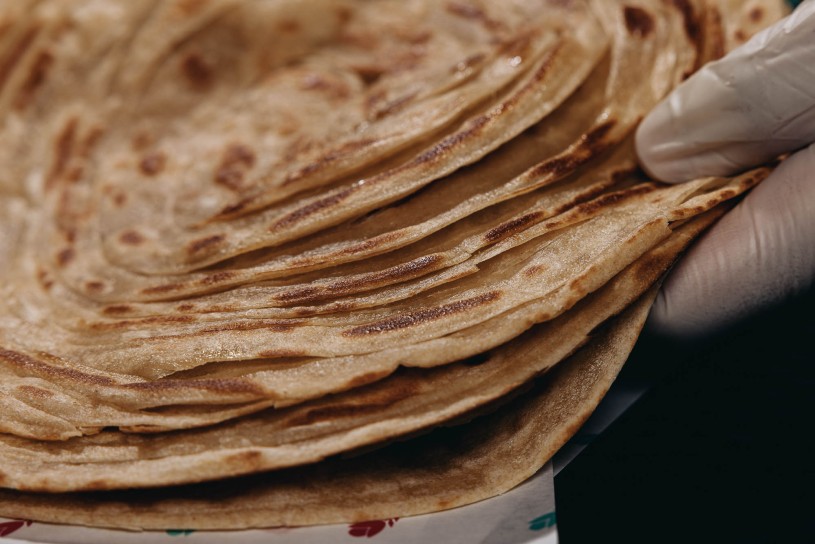
WHAT MADE YOU DECIDE TO OPEN UP YOUR BUSINESS IN THE ARTS DISTRICT?
I've lived in downtown for the better part of a decade now, and people who are from L.A. know that downtown is the center of L.A. When we decided to start Paratta, there was a bit of a restaurant boom happening in the Arts District with the opening of Bestia and Gorilla Taco. We wanted to give back to that community rather than going to an area that already has established South Asian cuisine, like Orange County. So it made the most sense to be in downtown L.A. where we get to expose non-Desi people to our cuisine and culture, flavors and these colors.
Also, art is part of our process and it was just a no-brainer to be in the Arts District. Our business is our food, so the brand design goes hand in hand with the artistic community here. We are comfortable being able to express ourselves not just with the culinary arts but also with design and graphic arts. We also donate food to the nearby missions and are trying our best to give back to the community.
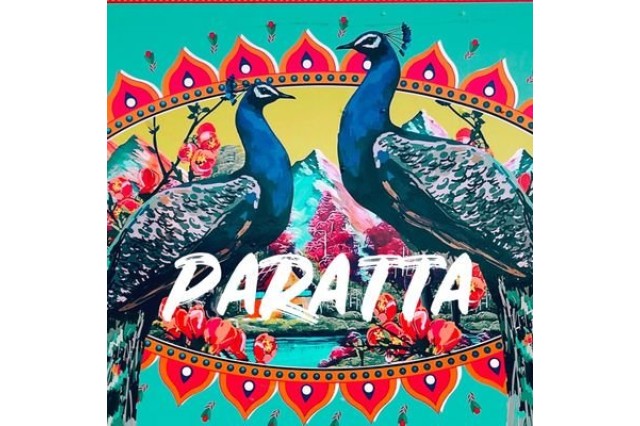
Paratta’s signature designs, logos, and colors were created by the co-owners who want to share the colors of their culture with L.A.
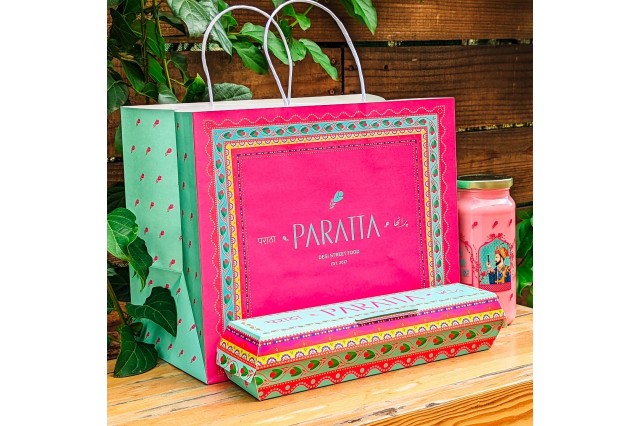
Every order comes in beautiful brightly colored packaging.
1 of 1
Paratta’s signature designs, logos, and colors were created by the co-owners who want to share the colors of their culture with L.A.
Every order comes in beautiful brightly colored packaging.
IT’S AMAZING THAT PARATTA DONATES TO THE LOCAL MISSIONS! CAN YOU SPEAK MORE ABOUT THAT?
Giving back to our community is something that we believe in and is part of the fabric of Paratta. It always hurts to see that there was so much food waste in the food industry, so we pride ourselves on trying to be as zero waste as possible. We run our operation in such a way that we only prepare as much as is ordered and anything extra is donated to local missions.
We also produce halal broth for international airlines, and twice a year we also host a donation weekend where proceeds from Paratta go to a specific nonprofit.

FOR THOSE THAT MAY NOT UNDERSTAND THE CONNECTION BETWEEN HALAL AND SOUTH ASIAN, CUISINE CAN YOU SHARE A LITTLE MORE ABOUT THAT?
Halal is a restriction similar to how Jewish people eat eat kosher food. Halal is a standard by which Muslims eat meat and is a standard of practice where the animals were raised in a humane and clean nature. This extends to a certification that ensures that when the animals were killed, there was minimal harm done to the animal.
For South Asian Muslims, finding the types of food that match your dietary restriction can be a little difficult–that's why we wanted to make sure that Paratta served halal food. I think it's cool that in the last couple years South Asian culture is coming into the mainstream, but there is still a lot more that needs to be shared. There are a lot of different types of people in South Asia and a bunch of different cultures [to learn about].

Paratta’s Instagram account includes specially designed greetings (made by the Paratta team) to the Muslim community. A saying familiar to many Muslims around the globe is, 'Ramadan Mubarak' which simply means 'Blessed Ramadan'.
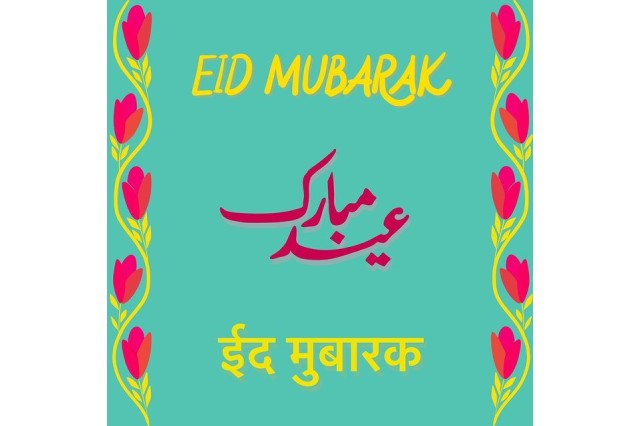
Eid Mubarak means to have a blessed Eid. Eid marks the end of Ramadan.
1 of 1
Paratta’s Instagram account includes specially designed greetings (made by the Paratta team) to the Muslim community. A saying familiar to many Muslims around the globe is, 'Ramadan Mubarak' which simply means 'Blessed Ramadan'.
Eid Mubarak means to have a blessed Eid. Eid marks the end of Ramadan.
WHAT DO YOU LOVE MOST ABOUT MAKING LACHHA PARATHA?
I think of the memories and the nostalgia that you feel when you eat lachha paratha. We have so many people who say it reminds them of their childhood, like “This reminds me of when I'm back home and my mom's making these on the weekend.” They visualize their mom standing, rolling these lachha parathas so effortlessly and it's a really difficult thing to make! Or it sparks a memory of being on the streets of Karachi or Mumbai and walking around buying food from the street vendors. Those are the memories that are evoked when you bite into a lachha paratha, just pure nostalgia.
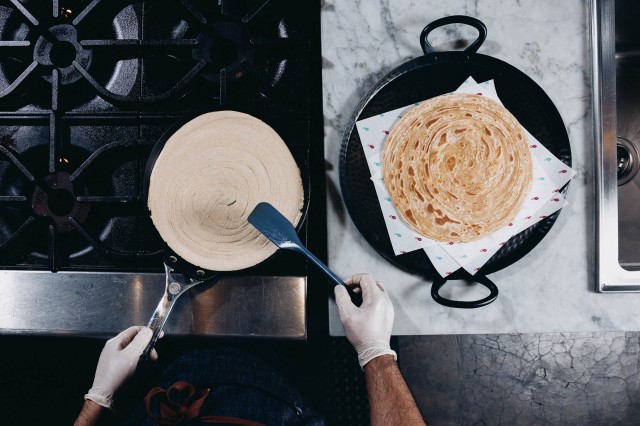
Paratta’s lachha paratha is made with the intention to share South Asian culture with L.A.
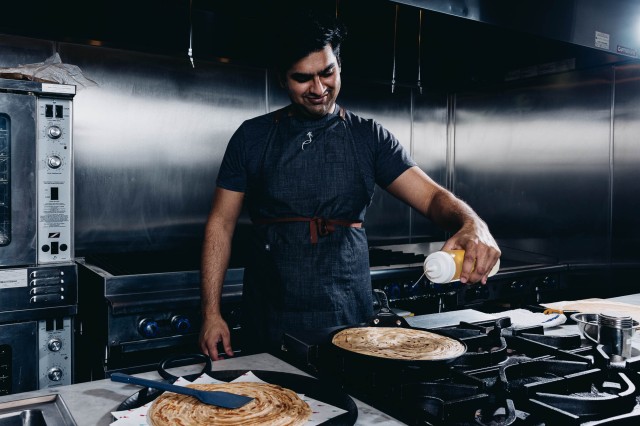
Asim is an expert at making the lachha paratha.
1 of 1
Paratta’s lachha paratha is made with the intention to share South Asian culture with L.A.
Asim is an expert at making the lachha paratha.
DO YOU HAVE A FAVORITE STEP IN THE FRYING PROCESS?
I think what separates the lachha paratha from a regular paratha is that lachha step. Lachha means layers. So the lachha step is essentially you're adding a bunch of layers to your dough. Think of it like a puff pastry or croissant dough–it has a bunch of folds. So the fold mechanism that we do is more of a spiral. So you take your dough, you get it really long, and then you wrap it around your finger into a spiral and you flatten it out and that step is a lot of fun. The precision that you have to have to get it to wrap around your fingers is difficult. After that you get to tuck in the last strand in between to the middle part of the dough. That lachha process is by far the most fun process of the frying.
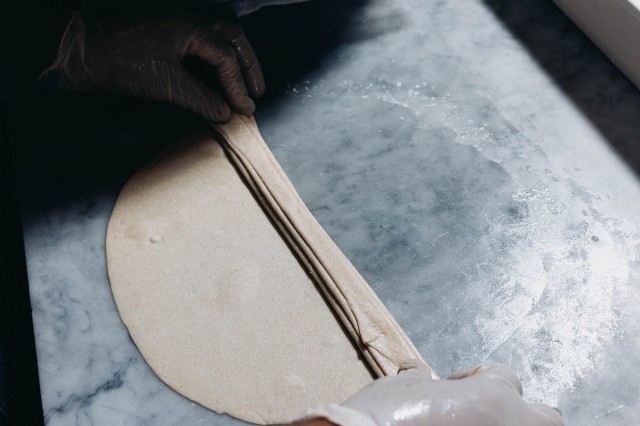
The lachha paratha dough is delicately folded.
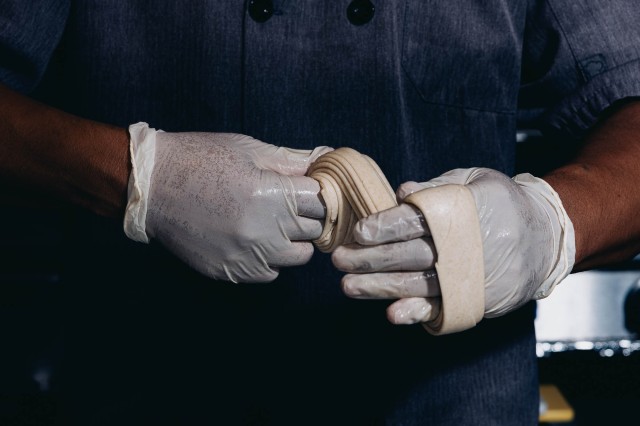
The dough is then wrapped around the fingers in a spiral.
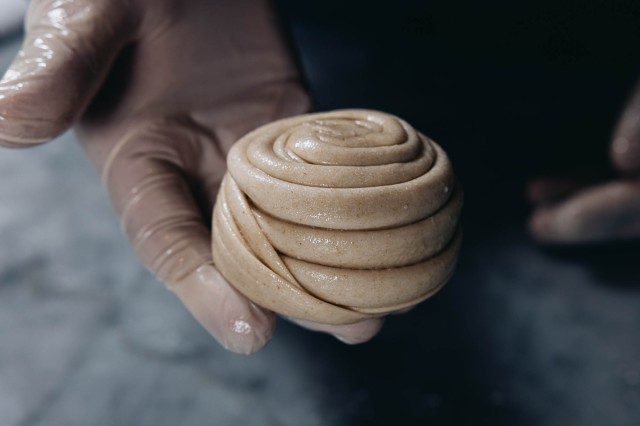
Here, the dough is now ready to be flattened and then warmed up.
1 of 1
The lachha paratha dough is delicately folded.
The dough is then wrapped around the fingers in a spiral.
Here, the dough is now ready to be flattened and then warmed up.
HOW WOULD YOU SAY LACHHA PARATHA BINDS PEOPLE IN YOUR COMMUNITY TOGETHER?
I think so many different cultures have some form of paratha or flatbread. You can go to places like East Africa, Southeast Asia, or the Middle East and everyone has their own version of a paratha even though it might be called something else like a scallion pancake or a tortilla or whatever! Essentially, it evokes a similar memory–you imagine your mom making it. I think that's what has made it binding. Everyone has their own version, and everyone can connect to it in some form.
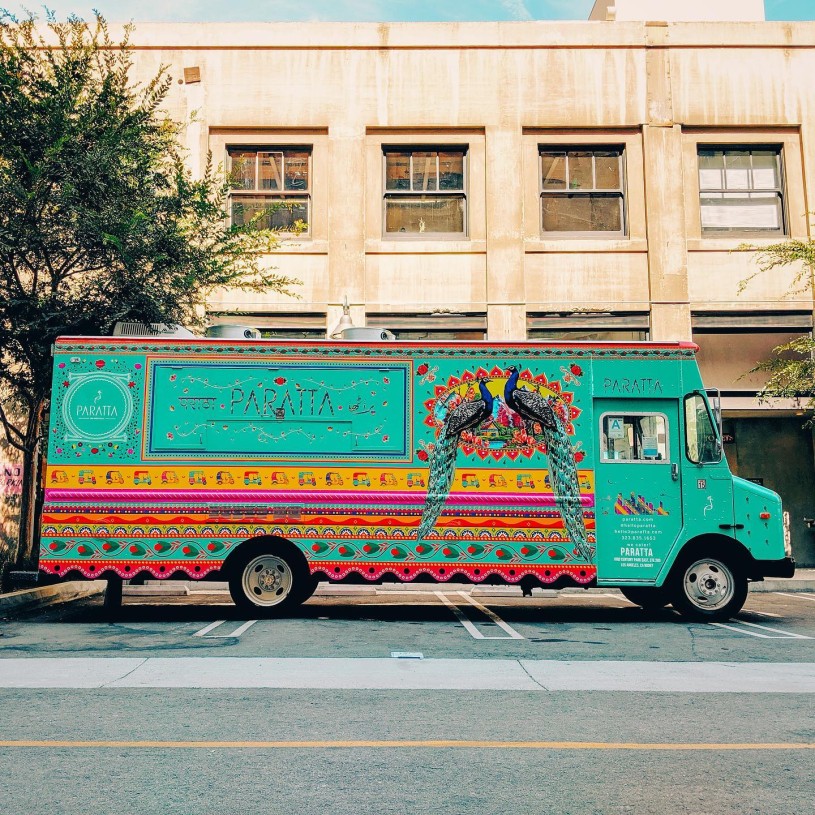
EXPLORE MORE FROM Paratta
To see what cooking at Paratta, go to paratta.com or order for pick up at their shared kitchen located in the Los Angeles Arts District at 672 S Santa Fe Ave. Los Angeles, CA 90021.
SHARE YOUR L.A. BREAD STORIES
Do you know an L.A. breadmaker who lovingly connects to your community? Do you want to share your favorite experience at Paratta? Join the conversation by tagging @NHMLA with #KneadedLA, and your story could be featured next!
Following the success of Kneaded: L.A. Bread Stories, we're celebrating the history, heritage, and communities of Los Angeles through the lens of different cultural traditions. This year, L.A. at Play highlights the vibrant and visionary work of artisans who fabricate dolls and figurines using a variety of techniques and materials.

